Greve,Denmark 作者: 来源: 发布时间:2021-06-18
一、人口,面积,所属地区
Population: 50,558
Area: 60.2 km²
Municipality in Sjælland
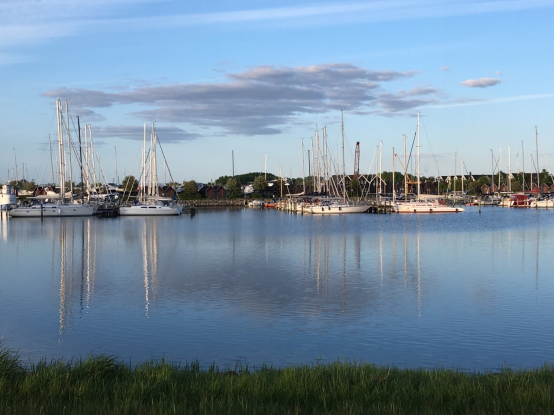
二、自然地理
Greve Municipality is a municipality about 21 km south-west of Copenhagen in Region Sjælland on the east coast of the island of Zealand (Sjælland) in eastern Denmark.
The site of its municipal council is the town of Greve Strand. Greve Strand (commonly also known simply as Greve) is a Danish town, seat of the Greve Municipality, in the Region Sjælland. Greve Strand is located in the southern side of the Zealand island, not too far (approx. 25km) from Copenhagen and is a part of its urban area.
Greve Municipality also has eight kilometers of white sandy beach, which continues into Køge Bay Beach Park - a unique recreational coastal area that stretches seven kilometers along the coast towards Copenhagen.
Greve is the largest municipality in the Køgeb Bay, which is only about 20 kilometers from the Town Hall Square in Copenhagen. The municipality has an attractive marina in Hunde and an idyllic fishing port in Mosede. Greve Svømmehal is one of the largest in the Nordic countries and in the cultural center Portal there are concerts, exhibitions and shows.
Transport
With the many commuters to and from Greve Municipality, the need for more transport options increased. The Køge Bay route was planned and the S-train came to Hunde in 1976, continued to Solrød in 1979 and to Køge in 1983. The Køge Bay motorway was inaugurated in the early 1970s and traffic increased dramatically. As more and more families bought a car.
三、经济发展和规模
Greve Municipality came out in 2019 with a po-positive operating result. Total ordinary operating profit (difference link between operating income and operating expenses)shows a profit of DKK 123 million DKK, which should seen in comparison to an originally budgeted one operating profit of DKK 88 million kr. The result of ordinary operations shows what there is left to finance other expenses than the operation. In 2019, profits from ordinary operations helped cover net plant expenses terns, which show a consumption of DKK 22 million. kr. Profit from operations minus consumption on plant generates a total profit of DKK 101 million. This is an improvement of DKK 95 million. DKK in advance team to original budget, and an improvement of DKK 60 million DKK in relation to the adjusted budget.
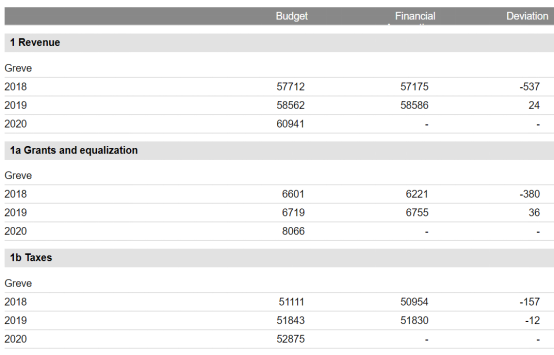
*All amounts are in DKK per. per capita in current prices.
四、产业特点/重点项目
Until the 1960s, the area was primarily agricultural: most businesses in town were concentrated along the coastal road "Strandvejen".
The main occupations in the municipalities were agriculture, horticulture and fishing. The population was largely employed within the municipalities' own borders. Today, several areas in Greve Municipality have been laid out for business, and a large part of the population works outside the municipality.
At the end of 1999, there were 16,732 jobs in Greve, and 7,843 of these were occupied with Count Citizens. 19,479 worked outside the municipality.
The City Council adopted at its meeting on March 23, 2019 Greve Municipality's Planning Strategy 2019 - We create spaces for the good life - close to the big city, closer to nature, which replaces the 2015 strategy.
In the planning strategy, the City Council presents its overall goals for the future development of the municipality. The strategy sets the political direction for the upcoming full revision of the municipal plan.
Plan Strategy 2019
The goal of Plan Strategy 2019 is to establish a strategy for urban development, which is concrete enough to set the direction for the work with municipal and local plans, and which can form the basis for the administration's prior dialogue with project developers and builders.
The goal of Plan Strategy 2019 has been translated into six benchmarks for urban development, which, based on various challenges and qualities, give an indication of what the goal of urban planning should be.
A city for the good life - all life : Citizens must be able to live in the municipality all life - regardless of life situation. It requires a supply of housing for all ages and with a variety of housing types to suit new family patterns and older ones. The need for a more varied supply of housing also offers the possibility of a more mixed city.
The mixed, safe city with room for diversity: Greve is a relatively divided city, where detached houses, terraced houses and detached houses are concentrated in each of their neighborhoods. It provides a city where different population groups live to a large extent separated in fairly uniform neighborhoods. A mix of housing and urban functions can create safe urban spaces and provide a basis for meeting places and communities.
The Green and Blue Oasis of the South Coast: The long beach, the green wedges through the city, afforestation, Hedeland, Køge Bay Beach Park, Greve Marina, Mosede Harbor and Mosede Fort are some of Greve's qualities that can compare with the best in the Greater Copenhagen area. These are qualities that must be used to fire Greve, and that must be strengthened as we build a new city and transform existing ones.
The healthy city in motion: Good outdoor spaces and access to urban nature provide a good framework for movement for all age groups and supports a healthy lifestyle. The short distances allow more people to use the bike more daily. Still, the number of obese people is increasing and many Greve citizens are getting too little exercise in their daily lives. In addition, many people experience problems with stress and loneliness. The framework for activity, movement and community must be prioritized when building new residential areas or when renovating existing ones.
The city is growing: The commercial areas for production and logistics companies are limited. Many of the new industries that Greve's entrepreneurs create are urban industries that require less space and which can help to bring life to the stationary areas.
The City of Regional Infrastructure: Greve's central location in the metropolitan area's infrastructure is a strength both in terms of settlement and in attracting businesses. But there is also a downside. The highway and the two rail links split the municipality, and in particular the highway causes problems with noise in residential areas. In addition, area reservations for Ring 5 and the noise zone around Roskilde Airport mean significant restrictions on the urban development opportunities in, for example, Tune. It is therefore necessary that the noise problems find a solution and that alternatives to Ring 5 are being worked on.
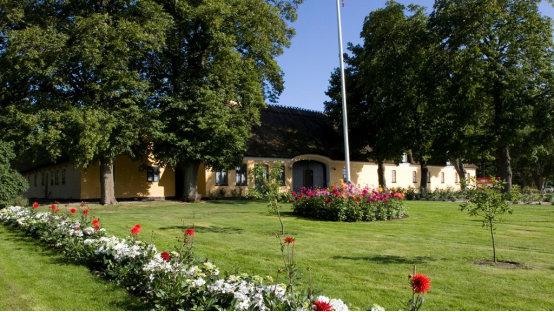
五、风景名胜,景点
Greve Museum
Address: Bækgårdsvej 9, 2670 Greve
Greve Museum is located on a beautiful old moorland estate surrounded by a lovely garden.
The museum has a particular focus on 19th century moorland culture and 20th century suburban development. The Greve Local History Archive, which is part of the Greve Museum, serves as the area's shared memory.
The museum's permanent exhibitions depict life in the area from around the year 1800 until today. There are also changing exhibitions in local history, arts and crafts.
Two Sundays and one evening a month, the museum offers lectures, guided tours or other activities. There is free admission to the museum and to the vast majority of events.
The museum has a cozy café serving light lunches and home-made cakes.
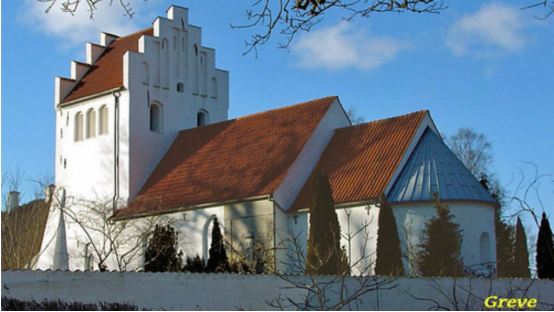
Count Church
Address: Degeneration thread 1, 2670 Greve
Greve Church is a beautiful, white church, built in a romantic style and towering on a ridge over Greve Parish. The church is preserved to its original extent with apse, choir and ship erected in chalk squares.
The oldest part of the church dates from the late 11th century.
To the north, the church has a Late Romanesque porch and to the west a late Gothic tower.
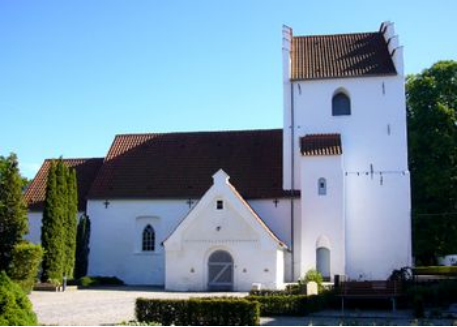
六、历史文化
Greve Municipality has existed since April 1, 1970, when the three rural municipalities Greve-Kildebrønde, Karlslunde-Karlstrup and Tune were merged as part of a nationwide municipal reform. However, Karlstrup was placed under the municipality of Solrød.
The municipality, which originally consisted of agricultural land and small villages, is today a modern large municipality.
Until the 1960s the area was primarily agricultural, and most businesses in town were concentrated along the coastal road "Strandvejen". With numerous holiday cottages near the coast of Køge Bugt (Køge Bay), this was also the destination for many inhabitants of Copenhagen on holiday away from the hustle and bustle of the city.
In the 1960s and 1970s large-scale plots were built, the agricultural land was rebuilt and detached houses and residential buildings were built. In the 1960s, the need for institutions increased as more women began working outside. Greve Municipality therefore had to set up daycare, daycare centers, leisure homes and leisure clubs and today has a total of 70. Nine new schools were added during the 1960s and 1970s, and older schools were rebuilt and expanded. Greve Municipality has 13 schools today. A high school and two private schools were also built.
Not only was there room for far more children and young people. Several older citizens also arrived. Before the municipal amalgamation in 1970, there was one old age home. Greve Municipality today has 4 large care centers, a large home care and elderly homes in several places in the municipality. Also stadiums, sports facilities, sports halls and swimming pools were built.
Køge Bay Beach Park was built from 1976-1979 and was inaugurated in 1980 by the then Prime Minister Anker Jørgensen. The beach park was implemented as a joint project for the beach municipalities from Avedøre to Greve.
The deal was earlier in the villages and the beach area in smaller retail outlets. Today, day-to-day shopping is concentrated in major shopping malls and the former stores have disappeared.
During the late 1960s and into the 1970s, many people moved permanently out of Copenhagen and into new homes in places like Greve. What was formerly farmers' fields quickly turned into districts of detached houses, whilst most of the shops and similar businesses near the coastal road moved into central shopping malls such as Hundige Storcenter and Greve Midtby Center. Around 1980 the S-train railroad network was expanded towards Køge, and the stations Greve and Hundige were placed adjacent to the shopping malls.
Today, it serves primarily as a residential municipality, functioning as a suburb for the larger Copenhagen area.
Greve Municipality was formed in 1970, as part of the kommunalreform ("Municipal Reform") of that year. It was established by combining the following parishes: Greve, Hundige, Karlslunde, Karlslunde Strand, Kildebrønde, Mosede, Tune.
Greve municipality was one of the municipalities that was not merged with any others on 1 January 2007 in the nationwide Kommunalreformen ("The Municipal Reform" of 2007).
七、其他信息
Heritage Municipality
The purpose of the cultural heritage project in Greve is to revitalize the 8.5 km beach road that runs through the municipality from Hunde in the north to Karlslunde in the south. As a result of strong growth and migration, the areas along Strandvejen have been subjected to major changes over the past decades without a comprehensive plan. Holiday homes and business environments have been transformed into detached neighborhoods, and Strandvejen appears as a busy and identity-free main artery between Copenhagen and Køge.
The Cultural Heritage Municipal Project lays the foundation for an understanding of Strandvejen's history and potential. The project speaks to the area's core stories, including about holiday life and the welfare community, which can be used to strengthen the sense of community in a municipality with many new immigrants and many different cultural backgrounds.
As an important part of the project, cultural environments have been designated along Strandvejen and a comprehensive plan has been made for the development of the beach road area. Furthermore, concrete potential plans have been drawn up for two main areas in the northern and southern parts of Strandvejen, respectively. These two areas must be developed as attractive, local gathering points and as experience points for Danish and foreign tourists with the Mosede Fort Museum as a lighthouse.
The Cultural Heritage Project has catalyzed a strong collaboration between the Municipality of Greve and the Greve Museum. The cooperation will be of great importance for the future development of the municipality with the cultural heritage as a common focal point. The project is thematized in three tracks - respectively: Storytelling and dissemination, Utilization and preservation and Development and renewal .
八、联系方式
Mayor: Pernille Beckmann
Address: Greve Municipality (Citizen Service and City Hall), Rådhusholmen 10, 2670 Greve
Telephone: 43 97 97 97
Facebook: https://www.facebook.com/grevekommune/
Website: https://www.greve.dk/
